The Fit for Purpose Land Administration Approach-Connecting People, Processes and Technology in Mozambique
Abstract
:1. Introduction
1.1. Context of Mozambique
1.2. Problem
1.3. Objective
2. Materials and Methods
2.1. Research Design
- The purpose of the action research strategy was to promote organizational learning and to produce practical outcomes through identifying issues, planning action, taking action, and evaluating action [44] in a PDCA5 quality improvement cycle [47,48]. Action research was fundamental to improve all the components of the FFPLA-MOZ approach, where one step, a specific case study, provided inputs to the next, based on the data collected, observations and lessons learned. The time horizon for this part of the research was longitudinal, over four years (January 2016–January 2020).
- Three case studies were defined with an incremental level of difficulty: (i) a peri-urban area, where parcels followed an urbanization plan, and the limits of the parcels were visible; (ii) a community where parcel boundaries were not clear; and (iii) a cluster of communities with no clear boundaries both for individual parcels and communities.
- The first case study involved 49 parcels, over a week, with a team of four people. The second case study involved 2500 parcels from two communities in two different provinces, during three months, with four teams of three people, two for community delimitations, and two for individual registrations. This was a complete coverage of the territories of these communities. The third case study involved a cluster of eight communities. In this case, the communities were delimited, but land registrations were performed in the center of the cluster, involving 820 parcels from three communities. One team of four people was dedicated to community delimitations, and three teams of three people were performing individual land registrations. The time horizon for this part of the research was cross-sectional [44,45], meaning that data from each of the case studies were collected quantitatively and qualitatively at a given moment, not over a long period. The patterns and differences between the different case studies were analyzed, providing improvements from one case study to the following [45].
- Semi-structured interviews surveys—to collect valuable information from experts of different thematic areas in an exploratory and descriptive manner. Interviews helped deepen the knowledge regarding the FFPLA approach and to answer “what”, “who”, “where”, “when”, “how” and “how much” questions [52] related to land administration processes. This part of the research supported the design of the conceptual model and guided the development of the FFPLA-MOZ approach.
- Participative observation—from the perspective of both an insider, as a participant, and an outsider, as an observer, to experience each of the case studies settings and further improve the approach based on reflections and learning process [53] throughout the active research period.
- Questionnaire surveys to 3369 land tenants and 10 community councils—as part of the case study strategy—to collect data from a large number of respondents in a standardized and economical way, allowing easy comparison and validation of data [44]. Questionnaires were designed to collect data related to individual parcels and communal lands and data related to titleholders. These were implemented into a mobile application with embedded data quality and time processing controls. The data collected were inserted into a database which then provided reports and dashboards of the most crucial performance measurements such as rejection rates; the number of parcels registered per project, per day, per team; the number of parcels registered by gender and land use; and the number of hectares registered.
- Questionnaire surveys to 24 end-users and 5 team managers of the mobile and cloud applications—to assess end-user satisfaction regarding the overall data quality, ease of use of the tools, and teams’ productivity. Qualitative data collected from these questionnaires were analyzed through descriptive statistical analysis.
- The research also utilized data from secondary sources [44,45], such as online satellite imagery and maps from Google maps, to obtain images to support the registration process. The national land cadastre database was also consulted to check for existing parcels to avoid overlapping registered parcels.
2.2. Reference Frameworks
2.3. Conceptual Model
- people or interested parties—to promote knowledge, awareness, and active participation of individuals and communities in the land registration. Apart from the participation of government agencies and services providers, active community engagement was advocated by several studies and frameworks [24,54,56,57,58]. Participatory land-use planning created a higher impact within the communities, increased ownership and satisfaction, and promoted a more sustainable land administration [59]. Crowdsourcing was also an essential approach for first registrations and maintenance of the land cadastres [58,60]. In this research, crowdsourcing was community-based in order to avoid land grabbing.
- processes—to implement the rules of the game in a standardized manner. A comprehensive land registration set of processes and procedures, combining both managerial and operational processes (end-to-end), integrating the individual land registration (RDUAT6) and community delimitation (DELCOM7) processes. This was helpful to achieve several benefits, including (i) increased quality of work; (ii) reduction of costs, (iii) reduction of time; and (iv) more accurate and up-to-date information. Processes design respected the key principles of the spatial, legal, and institutional frameworks proposed by Enemark et al. [24].
- innovative technology—to facilitate data acquisition and validation while working in the field, improve data quality, reduce time, and reduce work, errors, and rework costs. Innovative solutions had to be adequate to “recognize”, “record”, and “review” land rights cost-effectively. Solutions implemented in similar country contexts [61] proved to be effective to reduce costs [27,62,63,64] were also analyzed. The guiding principles for building land information systems for developing countries [65] were considered in the design and development of all technological innovations.
3. Results
3.1. The Mozambican Fit for Purpose Land Administration Approach
3.1.1. Principles and Criteria
3.1.2. Integrated and Harmonized Processes
- The Process Wheel (Figure 9) consisted of two main cycles: a managerial cycle in an outer circle and an execution cycle in an inner circle. The managerial cycle comprised three management processes: planning the period, monitoring and controlling all RDUAT/DELCOM projects, and evaluating the period. This outer cycle ran within a specific period, generally defined as a year. The execution process was performed in a cycle of a shorter duration for every RDUAT/DELCOM project. The inner cycle was comprised of five subprocesses: Prepare the Field Work, Prepare Communities, Collect Data in the Field, Process Data, Deliver Documents, and Close Project.
- The Process Orchestration Diagrams (Figure 10) illustrated all the processes, subprocesses, respective activities, and their sequence of execution, which supported the configuration of the workflows within the applications. It was an important tool to visualize those specific or common activities both to individual registrations and community delimitations, and therefore could be harmonized. In Figure 10, for example, the activities with white text font were only performed for community delimitations. These were to be completed in a later stage of the registration, outside the scope of this research.
- The Context Diagram described each of the processes embedded in the FFPLA-MOZ approach in greater detail. The Context Diagrams were designed uniformly to create a norm for utilization, facilitating monitoring and control. Each process was described in terms of Goals and Objectives, Activities and Tasks, Techniques, Roles and Responsibilities, Inputs and Outputs, Metrics, as well as Risks and Mitigation measures.
3.1.3. Technology Innovation
3.2. Improvements
3.2.1. Improvements through Integrated and Harmonized Processes
- Reduced total time per project: initially, a complete delimitation took around nine months, whilst with the new integrated and harmonized processes, the work was completed in five months, including individual land registrations within the community.
- Reduced overall program budget: after integrating individual registrations and community delimitations, recalculations of the “Terra Segura” program budget illustrated a reduction by 30 percent, just by optimizing and combining resources and activities.
- Reduced malpractices: adopting a uniform way to perform the work reinforced each participating role in the land administration and increased clarity on what to do, how to do, when to do it, thus promoting a more sustainable process-based approach to land administration.
3.2.2. Improvements through Technology Innovation
- Increased performance: implementing the SiGIT mobile application and its integration with both the cloud and the back-office system resulted in several optimizations. Data collection, validation, and processing time for individual registrations reduced from 35 to 18 min (alphanumeric data) and from 21 to 6 min (geographic data). The amount of time varied according to the number of people that needed to be registered for each parcel and if walking around the parcel boundary was required. Rejection rates dropped from 44 percent to 1 percent, and possible types of errors reduced from 16 to 3.
- Reduced costs: the costs of community delimitations when in a cluster were reduced by 60 percent, and systematic individual parcel registrations were reduced by 70 percent. Within this research, the cost of registering the individual parcels was 15 USD, and to delimitate a community was 2.000 USD. These reductions were achieved through a combination of processes and technology improvements. These costs did not include imagery acquisition as free images were utilized and georeferenced. It also did not include the design of community development agendas to manage natural resources, as this activity was not part of this research.
- Flexibility and accuracy of geographic information: with the SiGIT mobile application, the flexibility of capturing geospatial information was increased as four methods were simultaneously available for geographic information data collection. The decision of which method to utilize significantly depended on the working conditions of the area and the availability of adequate imagery. Overall, the utilization of the android GNSS was simple. Still, the precision was not adequate (precision varied from ±3 m to an average of ±10 m but in some cases going over ±18 m). The second method, the ability to draw the parcels over a map, proved to be a simpler and faster data collection procedure. Google Maps that were freely available were georeferenced using a GNSS and ground control points visible both on the map and in the field. This method had a drawback in situations where the boundaries were not clear or the quality of the image was poor. In the cases where good quality images were utilized, the method achieved ±0.52 m precision. In situations where the boundaries of a parcel were not clear on the image, functionality was added to the mobile application that permitted the user to walk around the parcel collecting geographic data. The third method utilized a differential GNSS connected via Bluetooth to the mobile application. This method achieved the best precision (±0.32 m) but was the most expensive method and required a professional surveyor to operate the GNSS. The fourth method was used when the differential GNSS could not interconnect with the mobile application.
- Increased control of team’s performance: one of the problems from previous exercises was the lack of information regarding teams’ performance during fieldwork and afterwards. Performance control was a requirement both from service providers and the Government. The cloud application provided a dashboard with several indicators that helped to correct several bottlenecks throughout the workflow.
- Increased end-user satisfaction: all field users indicated that the mobile application was easy to use and navigate, with straightforward questions. They also indicated that the spatial component embedded in the mobile application was a substantial value-added. They complained that the mobile application mandated filling in information previously skipped in paper forms. All office users and quality controllers indicated their workload reduced considerably as all data were automatically uploaded and checked. They also indicated that the number of rejections and re-works was minimum and that the dashboards were helpful to control teamwork and project completion rates.
4. Discussion
4.1. People: Awareness, Engagement, and Participation
4.2. Processes: Integration and Harmonization
4.3. Technology: Innovations to Improve Digital Services
5. Conclusions and Recommendations
Author Contributions
Funding
Institutional Review Board Statement
Informed Consent Statement
Data Availability Statement
Acknowledgments
Conflicts of Interest
| 1 | UNDP—United Nations Development Program |
| 2 | HDI—Human Development Index |
| 3 | Also known as GINI index, measures the extent to which the distribution of income (or, in some cases, consumption expenditure) among individuals or households within an economy deviates from a perfectly equal distribution. |
| 4 | SiGIT—Sistema de Gestão de Informação sobre Terras (Land Information Management System) |
| 5 | PDCA = Plan, Do, Check and Act. |
| 6 | RDUAT—Regularização do Direito de Uso e Aproveitamento da Terra (in English: Land Tenure Regularization). Good faith occupations and customary tenure are recognized by law, but do not require registration and titling. RDUAT is a formalization of this recognition, by recording and reviewing data regarding tenant’s and parcel’s data. |
| 7 | DELCOM—Delimitação Comunitária (in English: Community Delimitation). Community rights are recognized in the law. The process of delimitating communities envisages recognizing, recording and reviewing these rights, followed by a general community land use agenda. |
| 8 | GNSS—Global Navigation Satellite System |
| 9 | Non-Governmental Organizations |
| 10 | Identity cadastres such as the ID Card database, the electorate registration database, or the driving license database, contain biographic information such as name, date of birth, place of birth, filliation, marital status. |
References
- UN-Habitat. Women and Land in the Muslim World: Pathways to Increase access to Land for the Realization of Development, Peace and Human Rights; UNHabitat: Nairobi, Kenya, 2018. [Google Scholar]
- Enemark, S.; Bell, K.C.; Lemmen, C.; McLaren, R. Fit-For-Purpose Land Administration. FIG Publication No 60. Joint Publication; International Federation of Surveyors (FIG), World Bank: Copenhagen, Denmark, 2014. [Google Scholar]
- ILC. Women’s Land Rights; International Land Coalition: Rome, Italy, 2019. [Google Scholar]
- Singirankabo, U.A.; Ertsen, M.W. Relations between land tenure security and agricultural productivity: Exploring the effect of land registration. Land 2020, 9, 138. [Google Scholar] [CrossRef]
- Daley, E.; Englert, B. Securing land rights for women. J. East. Afr. Stud. 2010, 4, 91–113. [Google Scholar] [CrossRef]
- Daniel Ayalew, A.; Deininger, K.; Goldstein, M. Environmental and Gender Impacts of Land Tenure Regularization in Africa: Pilot Evidence from Rwanda; Africa Region Gender Practice Policy Brief, World Bank: Washington, DC, USA, 2011. [Google Scholar]
- Odeny, M. Improving Access to Land and strengthening Women’s land rights in Africa. In Proceedings of the Annual World Bank Conference on Land and Poverty, Washington, DC, USA, 8–11 April 2013; p. 16. [Google Scholar]
- Yngstrom, I. Women, wives and land rights in Africa: Situating gender beyond the household in the debate over land policy and changing tenure systems. Oxf. Dev. Stud. 2002, 30, 21–40. [Google Scholar] [CrossRef]
- De Soto, H. The Mistery of Capital—Why Capitalism Triumphs in the West and Fails Everywhere Else; Black Swan: London, UK, 2001. [Google Scholar]
- Payne, G.; Durand-Lasserve, A.; Rakodi, C. The limits of land titling and home ownership. Environ. Urban. 2009, 21, 443–462. [Google Scholar] [CrossRef]
- Deininger, K. Towards sustainable systems of land administration: Recent evidence and challenges for Africa. Af. JARE 2010, 5, 205–226. [Google Scholar]
- UN General Assembly. Transforming our world: The 2030 Agenda for Sustainable Development. Available online: https://sdgs.un.org/2030agenda (accessed on 25 April 2021).
- Musinguzi, M.; Enemark, S. A Fit-For-Purpose Approach to Land Administration in Africa—supporting the 2030 Global Agenda. Int. J. Technoscience Dev. 2019, 4, 69–89. [Google Scholar]
- International Land Coalition. The International Land Coalition and Sustainable Development Goals Working Together to Realise Land Governance; International Land Coalition: Rome, Italy, 2018. [Google Scholar]
- ActionAid International. Securing Women’s Right to Land and Livelihoods a Key to Ending Hunger and Fighting AIDS; ActionAid International: Johannesburg, South Africa, 2008. [Google Scholar]
- FAO. Land Access in Rural Africa: Strategies to Fight Gender Inequality; FAO: Rome, Italy, 2008. [Google Scholar]
- Chigbu, U.E.; Paradza, G.; Dachaga, W. Differentiations in women’s land tenure experiences: Implications for women’s land access and tenure security in sub-saharan Africa. Land 2019, 8, 22. [Google Scholar] [CrossRef] [Green Version]
- Haldrup, K. Mainstreaming Gender Issues in Land Administration: Awareness, Attention and Action. In Proceedings of the FIG XXII International Congress—Washington DC, Washington, DC, USA, 19–26 April 2002. [Google Scholar]
- Agarwal, B. Gender equality, food security and the sustainable development goals. Curr. Opin. Environ. Sustain. 2018, 34, 26–32. [Google Scholar] [CrossRef]
- Daley, E.; Flower, C.; Miggiano, L.; Pallas, S. Women’s Land Rights and Gender Justice in Land Governance: Pillars in the Promotion and Protection of Women’s Human Rights in Rural Areas; International Land Coalition: Rome, Italy, 2013. [Google Scholar]
- FAO. Improving gender equity in access to land. In FAO Land Tenure Notes 2; FAO: Rome, Italy, 2006. [Google Scholar]
- FAO. Governing Land for Women and Men—A Technical Guide to Support the Achievement of Responsible Gender-Equitable Governance of Land Tenure. A technical Guide to Governance of Land Tenure; FAO: Rome, Italy, 2013; p. 120. [Google Scholar]
- McLaren, R.; Enemark, S. Fit-For-Purpose Land Administration: Developing Country Specific Strategies for Implementation. In Proceedings of the Responsible Land Governance: Towards an Evidence Based Approach: World Bank Conference on Land and Poverty, Washington, DC, USA, 20–24 March 2017. [Google Scholar]
- Enemark, S.; McLaren, R.; Lemmen, C. Fit-For-Purpose Land Administration Guiding Principles; Global Land Tool Network (GLTN): Copenhagen, Denmark, 2015. [Google Scholar]
- de Zeeuw, K.; Dijkstra, P.; Lemmen, C.; Unger, E.-M.; Molendijk, M.; Oosterbroek, E.-P.; van den Berg, C. Bridging the Security of Tenure Gap: Fit-For-Purpose Initiatives. In Proceedings of the FIG Working Week 2019 Geospatial Information for a Smarter Life and Environmental Resilience, Hanoi, Vietnam, 22–26 April 2019. [Google Scholar]
- Morales, J.; Lemmen, C.; De By, R.; Molendijk, M.; Oosterbroek, E.-P.; Ortiz Dávila, A.E. On the Design of a Modern and Generic Approach to Land Registration: The Colombia Experience. In Proceedings of the 8th International FIG Workshop on the Land Administration Domain Model, Kuala Lumpur, Malaysia, 1–3 October 2019; pp. 217–242. [Google Scholar]
- Mekking, S.; Kougblenou, D.V.; Kossou, F.G. Fit-For-Purpose Upscaling Land Administration—A Case Study from Benin. Land 2021, 10, 440. [Google Scholar] [CrossRef]
- GLTN, UN-Habitat. Fit-For-Purpose Land Administration Guiding Principles for Country Implementation; Global Land Tool Network (GLTN): Copenhagen, Denmark, 2016. [Google Scholar]
- Enemark, S. Fit-for-purpose land administration for sustainable development. GIM Int. 2016, 30, 16–19. [Google Scholar]
- McLaren, R.; Enemark, S.; Lemmen, C. Guiding Principles For Building Fit-For-Purpose Land Administration Systems in Developing Countries: Capacity Development, Change Management and Project Delivery. In Proceedings of the 2016 World Bank Conference on Land and Poverty, Washington, DC, USA, 14–18 March 2016. [Google Scholar]
- Lemmen, C.; Enemark, S.; McLaren, R.; Antonio, D.; Gitau, J.; Dijkstra, P.; De Zeeuw, C. Guiding Principles for Building Fit-For-Purpose Land Administration Systems in Less Developed Countries: Providing Secure Tenure for All. In Proceedings of the 2016 World Bank Conference on Land and Poverty, Washington, DC, USA, 14–18 March 2016. [Google Scholar]
- INE. Annual Statistics. Maputo—Moçambique. Available online: http://www.ine.gov.mz/ (accessed on 31 May 2021).
- Government of Mozambique. Voluntary National Review of Agenda 2030 for Sustainable Development; Government of Mozambique: Maputo, Mozambique, 2020.
- UNDP. Human Development Report 2020—The Next Frontier Human Development and the Anthropocene; UNDP: New York, NY, USA, 2020. [Google Scholar]
- DINAT. Avaliação da Governação de Terras—Land Governance Assessment—Mozambique, Based on the WorldBank LGAF Framework; DINAT: Maputo, Mozambique, 2017. [Google Scholar]
- De Carvalho, J.A. Balanço dos Registos de Terras Activos no SiGIT—Internal Report DINAT; 2018; Unpublished. [Google Scholar]
- Balas, M.; Carrilho, J.; Pascoal, T.; Queface, D.; Carimo, R.; Pinheiro, A. Secured Land tenure Program in Mozambique—A Fit For Purpose Approach. In Proceedings of the 2016 World Bank Conference on Land and Poverty—Scalling up Responsible Land Governance, Washington, DC, USA, 14–18 March 2016. [Google Scholar]
- DNTF. Estudo de Auditoria Social e de Género na Gestão e Administração de Terras; DINAT: Maputo, Mozambique, 2014. [Google Scholar]
- Larsson, G. Land Registration and Cadastral Systems: Tools for Land Information Management; John Wiley and Sons Inc.: Hoboken, NJ, USA, 1991; Available online: https://search.library.uq.edu.au/primo-explore/fulldisplay?vid=61UQ&docid=61UQ_ALMA2180440060003131&lang=en_US&context=L&query=browse_subject,exact,environmental%20sciences%20%23fast&sortby=title&mode=browse (accessed on 25 April 2021).
- Hanstad, T. Designing Land Registration Systems for Developing Countries. Am. Univ. Int. Law Rev. 1998, 13, 647–703. [Google Scholar]
- Dale, P.; McLaughlin, J. Providing a Detailed Discussion of a Third Type of Cadastre, the “Multi-Purpose Cadastre.” In Land Information Management; Oxford University Press: Oxford, UK, 1998; pp. 63–84. ISBN 978-0198584049. [Google Scholar]
- Williamson, I. The Justification of Cadastral Systems in Developing Countries. Geomatica 1997, 51, 21–36. [Google Scholar]
- World Bank. Mozambique Land Administration Project (Terra Segura); The World Bank: Washington, DC, USA, 2018; p. 164551. Available online: https://documents1.worldbank.org/curated/en/933141621369593098/pdf/Disclosable-Restructuring-Paper-Mozambique-Land-Administration-Project-Terra-Segura-P164551.pdf (accessed on 25 April 2021).
- Saunders, M.; Lewis, P.; Thornhill, A. Research Methods for Business Students, 8th ed.; Pearson Education Limited: New York, NY, USA, 2019. [Google Scholar]
- Bryman, A. Social Research Methods, 4th ed.; Oxford University Press: Oxford, UK, 2012. [Google Scholar]
- dos Santos, L.A.B.; do Vale Lima, J.M.M.; Garcia, F.M.G.P.P.; Monteiro, F.T.; da Silva, N.M.P.; dos Santos, R.J.R.P.; Afonso, C.F.N.L.D.; da Piedade, J.C.L.; Laranjo, P.J.F.; de Almeida Fachada, C.P. Orientações Metodológicas para a Elaboração de Trabalhos de Investigação. Cadernos do IUM N.8. 2019. Available online: https://www.ium.pt/s/wp-content/uploads/20190821_CAD-08_Miolo_WEB-1.pdf (accessed on 12 January 2021).
- Deming, W.E. Out of the Crisis; MIT Press: Cambridge, MA, USA, 1986. [Google Scholar]
- Sokovic, M.; Pavletic, D.; Pipan, K.K. Quality Improvement Methodologies—PDCA Cycle, RADAR Matrix, DMAIC and DFSS Industrial management and organisation Industrial management and organisation. J. Achiev. Mater. Manuf. Eng. 2010, 43, 476–483. [Google Scholar]
- Corcoran, P.B.; Walker, K.E.; Wals, A.E.J. Case studies, make-your-case studies, and case stories: A critique of case-study methodology in sustainability in higher education. Environ. Educ. Res. 2004, 10, 7–21. [Google Scholar] [CrossRef]
- Yin, R.K. Estudo de Caso: Planejamento e Métodos, 2nd ed.; Bookman: Porto Alegre, Brazil, 2001. [Google Scholar]
- Neuman, W.L. Social Research Methods: Qualitative and Quantitative Approaches; Pearson New International Edition: Essex, UK, 2014. [Google Scholar]
- UN-GGIM. Framework for Effective Land Administration: A Reference for Developing, Reforming, Renewing, Strengthening, Modernizing, and Monitoring Land Administration; UN-GGIM: New York, NY, USA, 2020. [Google Scholar]
- Spradley, J.P. Participante Observation; Waveland Press: Long Grove, IL, USA, 2016. [Google Scholar]
- Deininger, K.; Selod, H.; Burns, A. Areas Covered by the Land Governance Assessment Framework; The World Bank: Washington DC, USA, 2012. [Google Scholar]
- Balas, M.; Carrilho, J.; Murta, J.; Matlava, L.; Marques, M.R.; Joaquim, S.P.; Lemmen, C. A Fit-For-Purpose Land Cadastre in Mozambique. In Proceedings of the 2017 World Bank Conference on Land and Poverty—Responsible Land Governance: Towards an Evidence Based Approach, Washington, DC, USA, 20–24 March 2017. [Google Scholar]
- Groenendijk, E.M.C.; Lemmen, C.; Bennett, R.M. Educational tools for fit for purpose land administration: Experiences and lessons from Mozambique. GIM Int. 2016, 30, 29–31. [Google Scholar]
- Norfolk, S. Aplicação da Cadeia de Valor da Terra Comunitária (CaVaTeCo) nos Processos de formalização da posse da terra e a Emissão de Certificados de DUATs pelas Comunidades Locais; Terra Firma: Maputo, Mozambique, 2017. [Google Scholar]
- RICS. Crowdsourcing Support of Land Administration: A New, Collaborative Partnership between Citizens and Land Professionals. RICS Research Report (November). 2011. Available online: https://www.clge.eu/wp-content/uploads/2012/05/16310_RICS_Crowdsourcing_Report-final-WEB.pdf (accessed on 15 January 2021).
- Dalupan, M.; Haywood, C.; Wardell, D.A.; Cordonnier-Segger, M.C.; Kibugi, R. Building Enabling Legal Frameworks for Sustainable Land-Use Investments in Zambia, Tanzania and Mozambique: A Synthesis; IDLO: Nairobi, Kenya; CIFOR: Nairobi, Kenya, 2015. [Google Scholar]
- McLaren, R. Crowdsourcing support of land administration—A partnership approach. Int. Fed. Surv. Artic. Mon. 2011. Available online: https://www.fig.net/resources/monthly_articles/2011/mclaren_december_2011.asp (accessed on 31 October 2020).
- Deininger, K.; Augustinus, C.; Enemark, S.; Munro-faure, P. Innovations in Land Rights Recognition, Administration, and Governance; A World Bank Study: Washington, DC, USA, 2010. [Google Scholar]
- Jones, B.; Lemmen, C.; Molendijk, M. Low Cost, Post Conflict Cadastre with Modern Technology. In Proceedings of the Responsible Land Governance: Towards and Evidence Based Approach, Washington, DC, USA, 20–24 March 2017; The World Bank: Washington, DC, USA, 2017. [Google Scholar]
- Reydon, B.; Molendijk, M.; Lemmens, C. Land Titling Costs: Evidence from Literature and Cases Using FFP. 2020. Available online: https://research.utwente.nl/en/publications/land-titling-costs-evidence-from-literature-and-cases-using-ffp (accessed on 21 February 2021).
- Antonio, D.; Njogu, S.; Nyamweru, H.; Gitau, J. Transforming Land Administration Practices through the Application of Fit-For-Purpose Technologies: Country Case Studies in Africa. Land 2021, 10, 538. [Google Scholar] [CrossRef]
- Enemark, S.; Mclaren, R.; Lemmen, C.; Antonio, D.; Gitau, J. Scaling Up Responsible Governance: Guiding Principles for Building Fit-For-Purpose Land Administration Systems in Developing Countries. In Proceedings of the 2016 World Bank Conference on Land and Poverty, The World Bank, Washington, DC, USA, 14–18 March 2016. [Google Scholar]
- Balas, M.; Carrilho, J.; Murta, J.; Joaquim, S.P.; Lemmen, C.; Matlava, L.; Marques, M.R. Mozambique Participatory Fit For Purpose Massive Land Registration. In Proceedings of the 2017 World Bank Conference on Land and Poverty—Responsible Land Governance: Towards an Evidence Based Approach, The World Bank, Washington, DC, USA, 20–24 March 2017. [Google Scholar]
- Laarakker, P.; Zevenbergen, J.; Georgiadou, Y. Land Administration Crowds, Clouds, and the State. In Advances in Responsible Land Administration, 1st ed.; CRC Press: Boca Raton, FL, USA, 2015; pp. 91–114. [Google Scholar]
- Carrilho, J.; Balas, M.; Marques, M.R.; Macate, Z. Addressing Fuzzy Boundaries in Community Delimitations for Systematic Cadastre in Mozambique. In Proceedings of the 2019 World Bank Conference on Land and Poverty—Catalyzing Innovation, Washington, DC, USA, 25–29 March 2019. [Google Scholar]
- Balas, M.; Joaquim, S.; Almeirim, J. SiGIT Land Information System and the Challenges Imposed by the Fit for Purpose Approach to Land Administration. In FIG Congress 2018 Embracing Our Smart World Where the Continents Connect: Enhancing the Geospatial Maturity of Societies; FIG: Istambul, Turkey, 11 May 2018. [Google Scholar]
- ISO. ISO 19152:2012 Geographic Information—Land Administration Domain Model, 1st ed.; ISO: Geneva, Switerzeland, 2012. [Google Scholar]
- Hartlief, V.; Ntauazi, C.; Deus, N.R.; Santpoort, R.; Steel, G. Documento de Trabalho 2: Assegurar os Direitos da Mulher à Terra no Continente Africano—Moçambique; LANDac: Utrecht, The Netherlands, 2018. [Google Scholar]
- Balas, M.; Carrilho, J.; Joaquim, S.P.; Murta, J.; de Carvalho, J.A.; Lemmen, C. Assisted Community-Led Systematic Land Tenure Regularization. In Proceedings of the 2018 World Bank Conference on Land and Poverty—Land Governance in an Interconnected World, Washington, DC, USA, 19–23 March 2018. [Google Scholar]
- Balas, M.; Carrilho, J.; Vaz, K. The Role of Communities in Land Cadastre Maintenance. In FIG Working Week 2019 Geospatial Information for a Smarter Life and Environmental Resilience; FIG: Hanoi, Vietnam, 26 April 2019. [Google Scholar]
- Lewis, L.K. Vital Considerations for Software Implementation: How to Ensure Success of Your New Land Administration System; Reuters, T., Ed.; Thomson Reuters Aumentum: Toronto, ON, Canada, 2009; Available online: https://tax.thomsonreuters.com/site/wp-content/pdf/aumentum/10-Considerations-3S-Whitepaper.pdf (accessed on 14 February 2016).
- Land Equity International. Land Administration Information and Transaction Systems: State of Practice and Decision Tools for Future Investment; Report No. 95332419c00892020; Land Equity International: Wollongong, Australia, 2020. [Google Scholar]
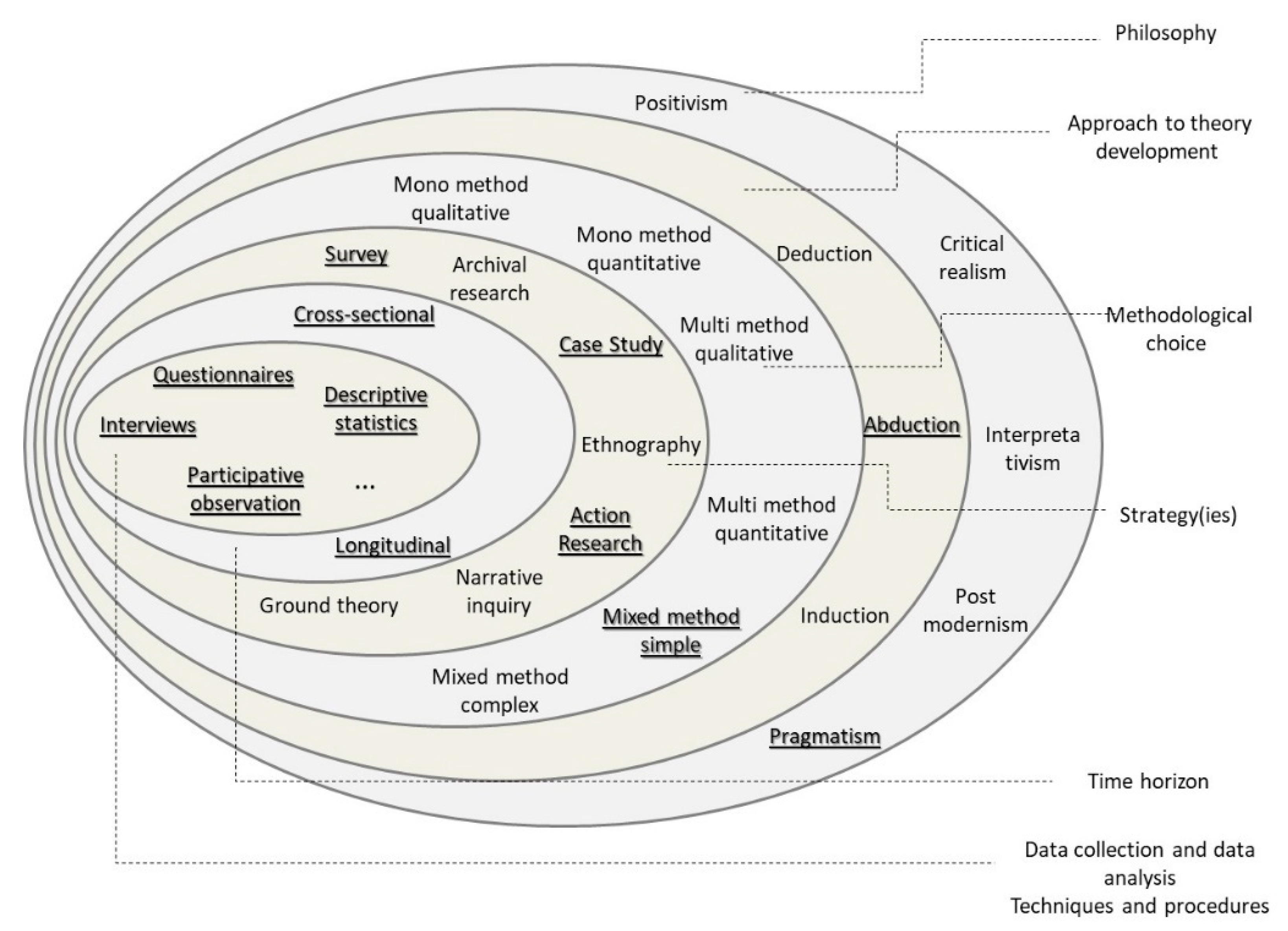
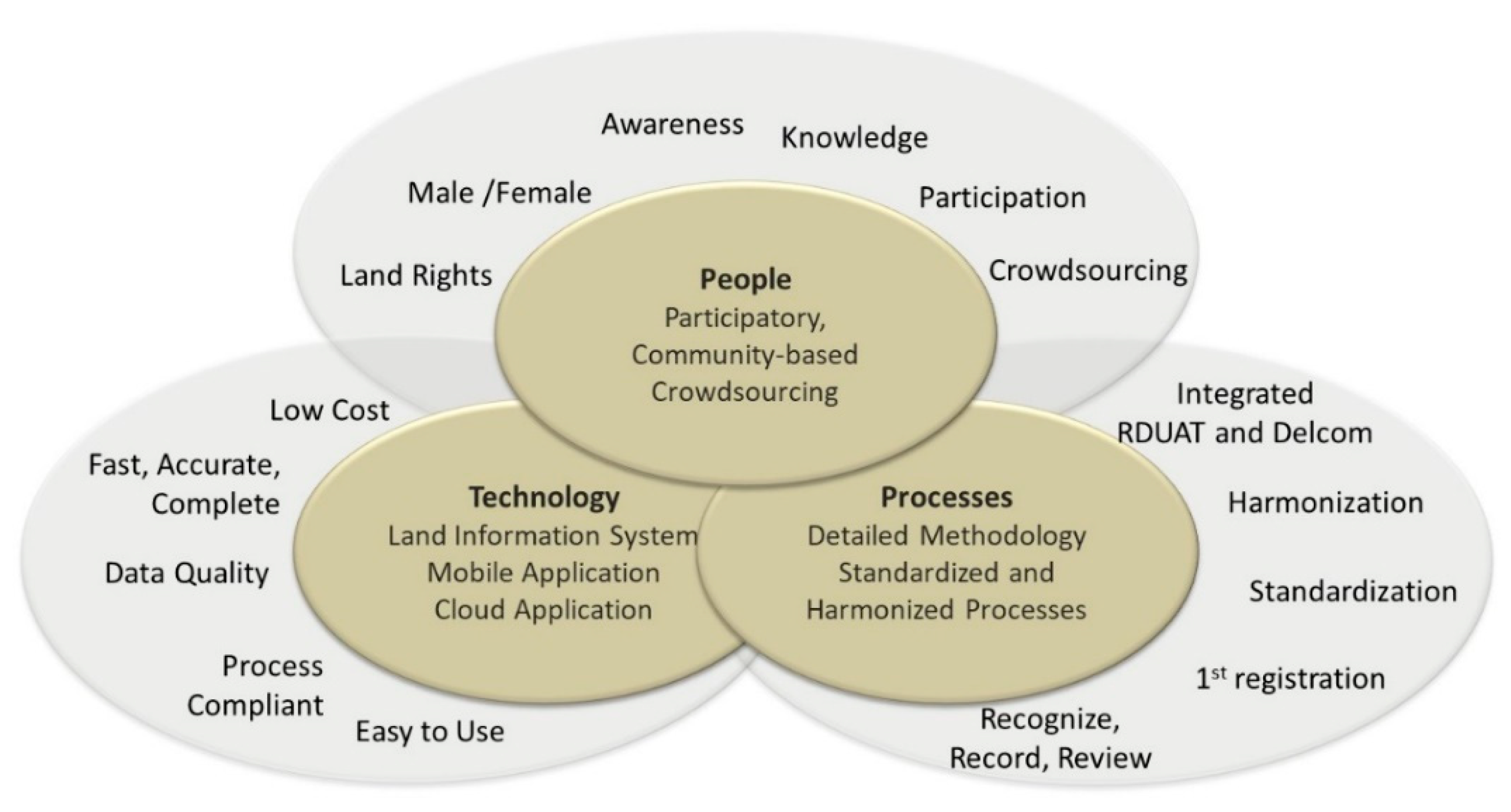
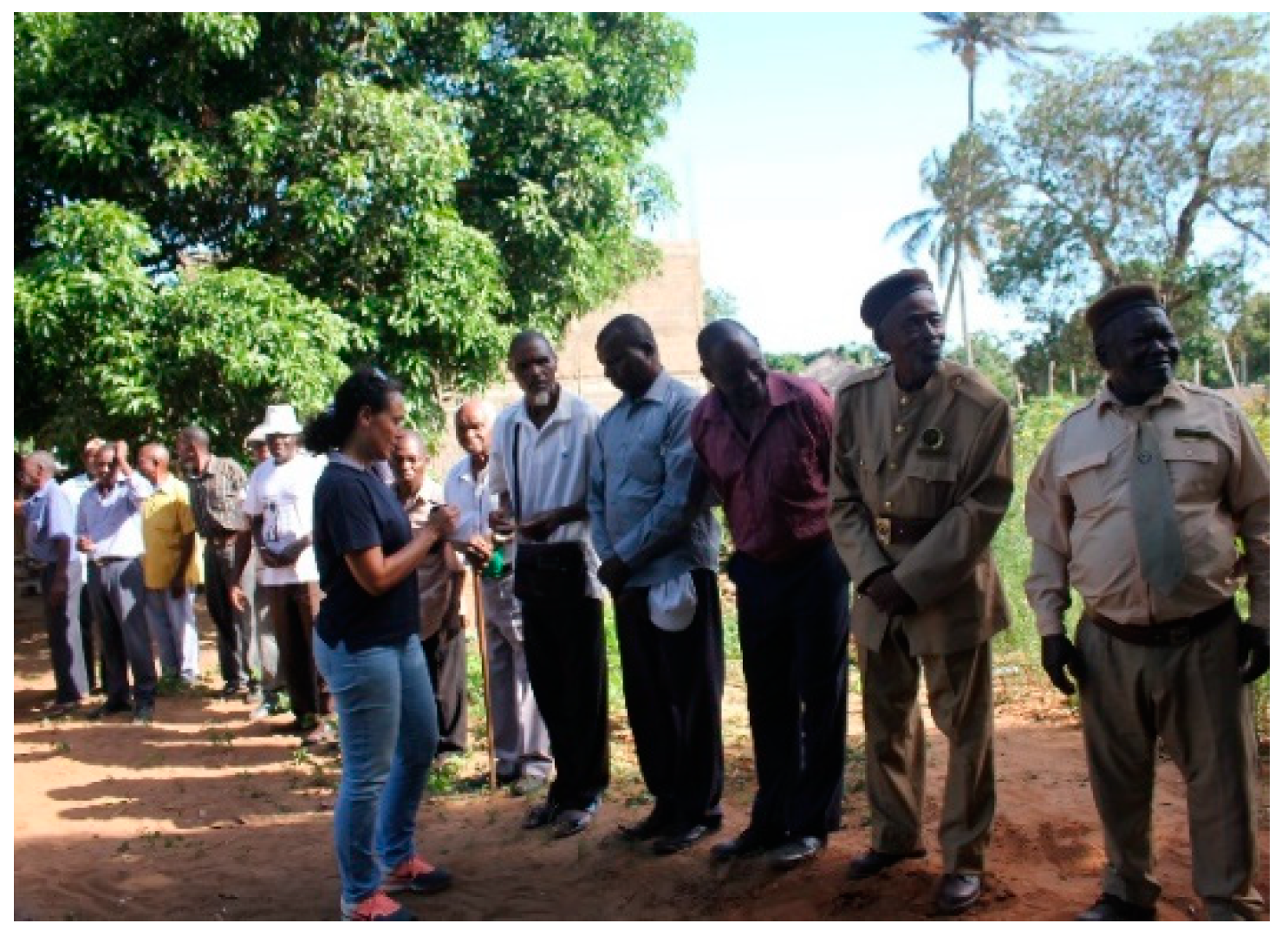
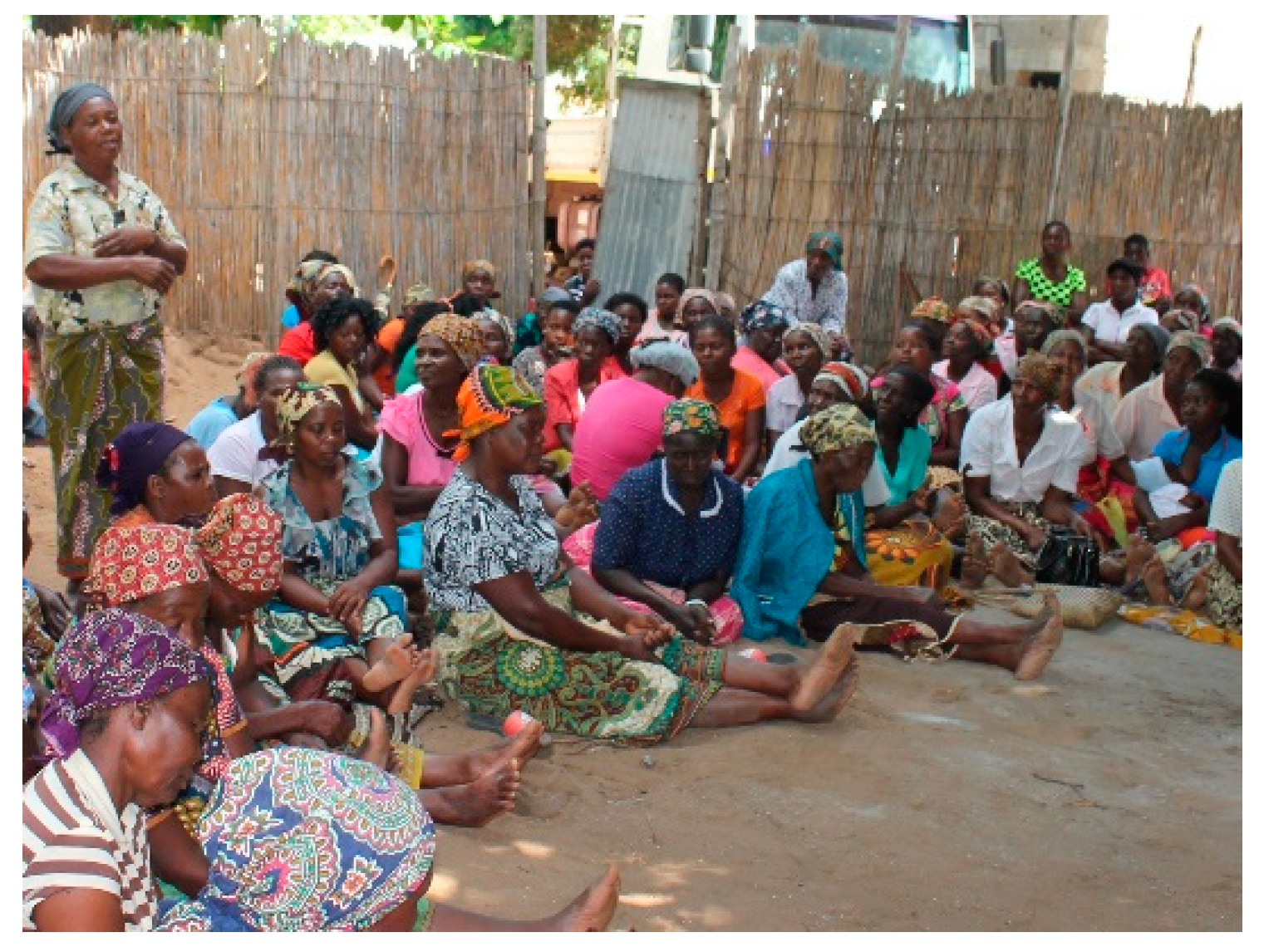

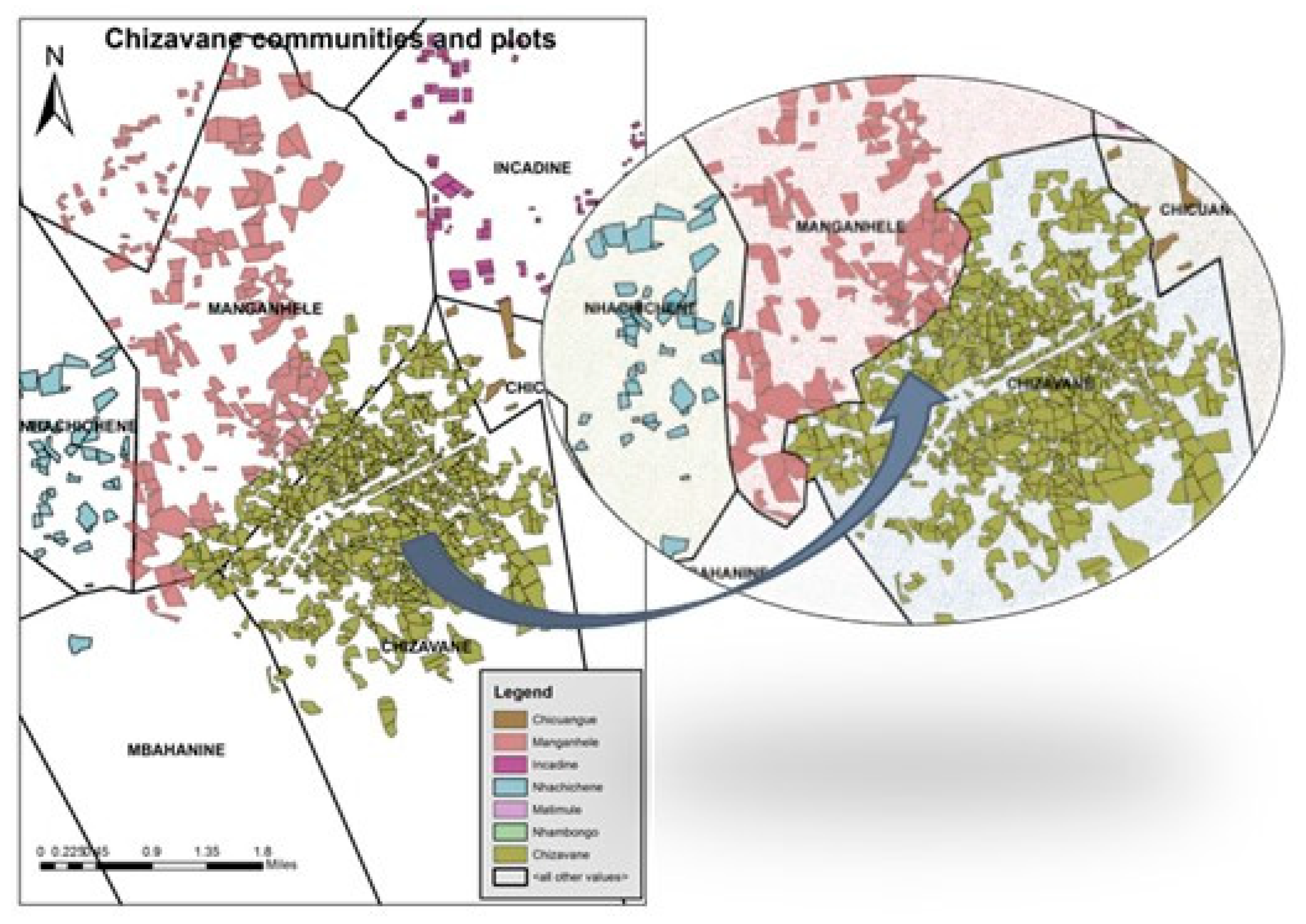
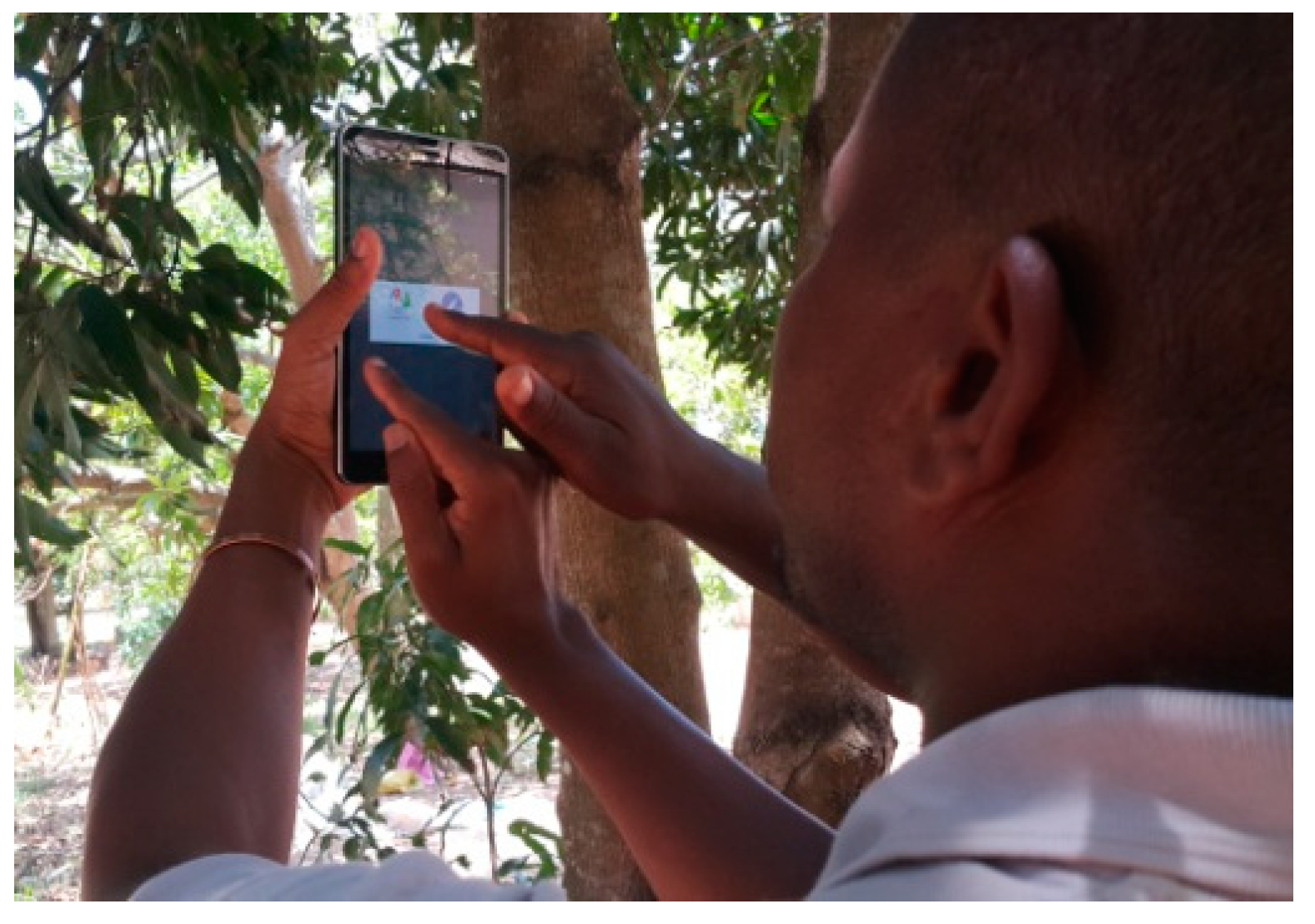

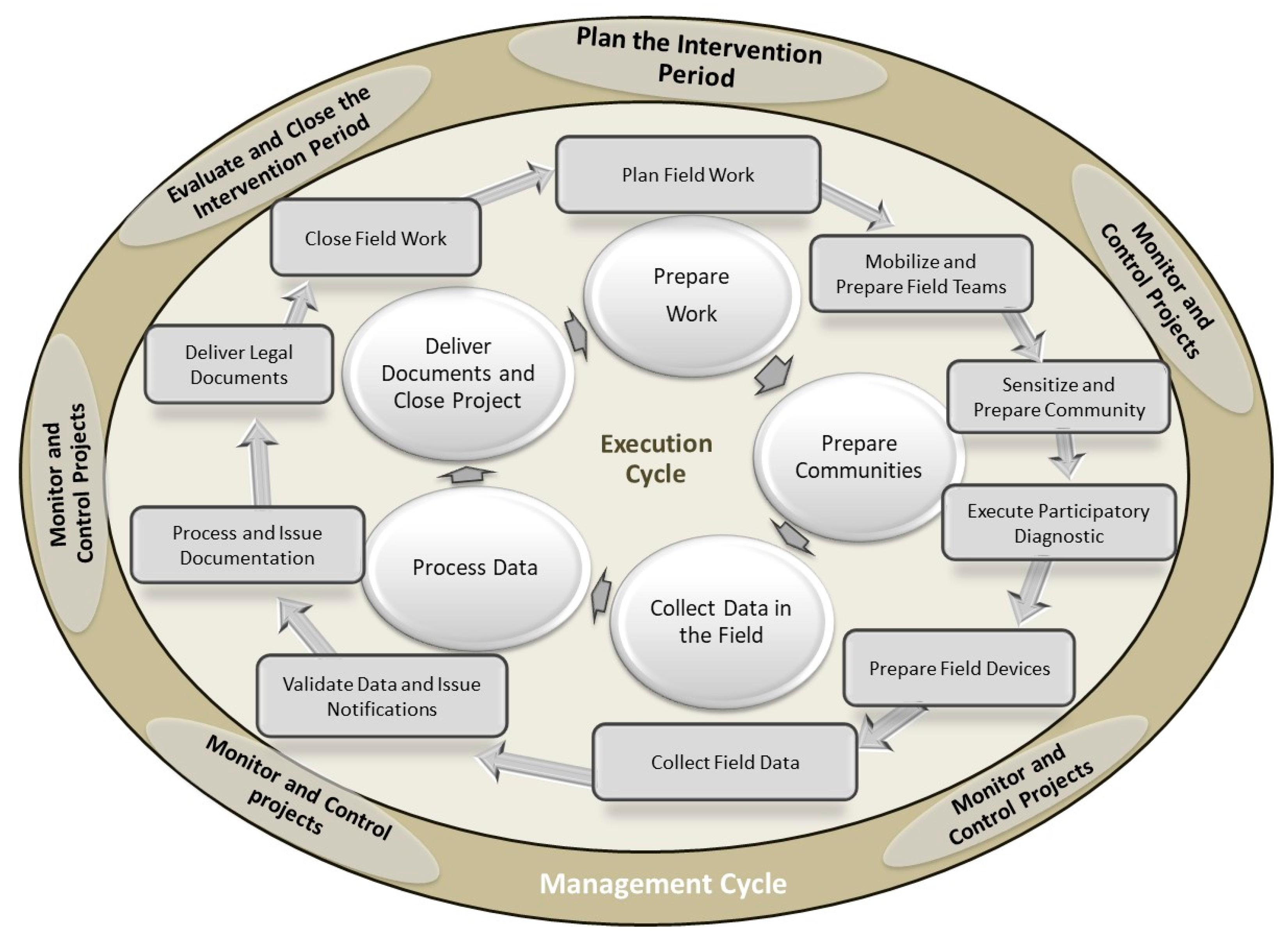
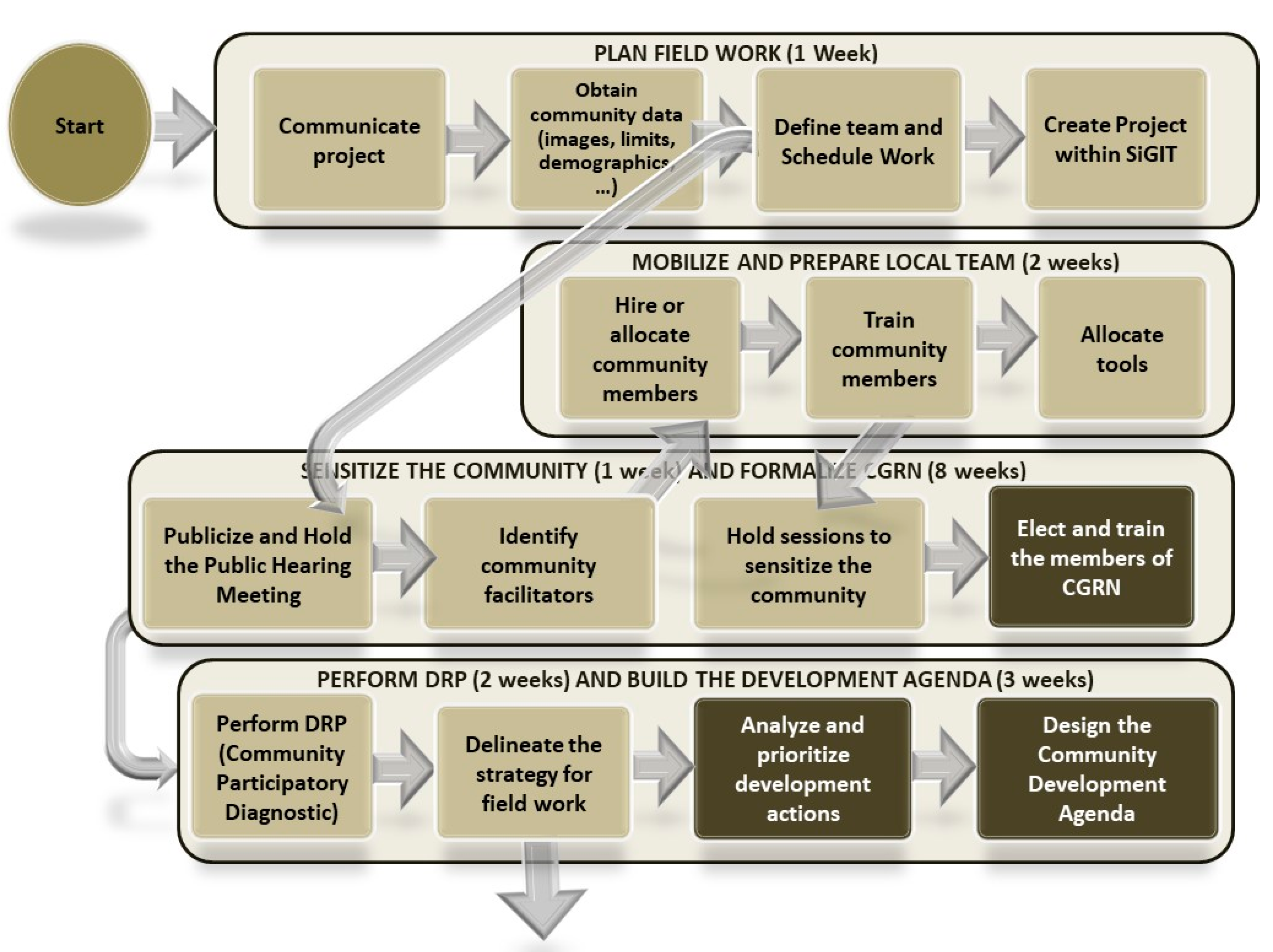

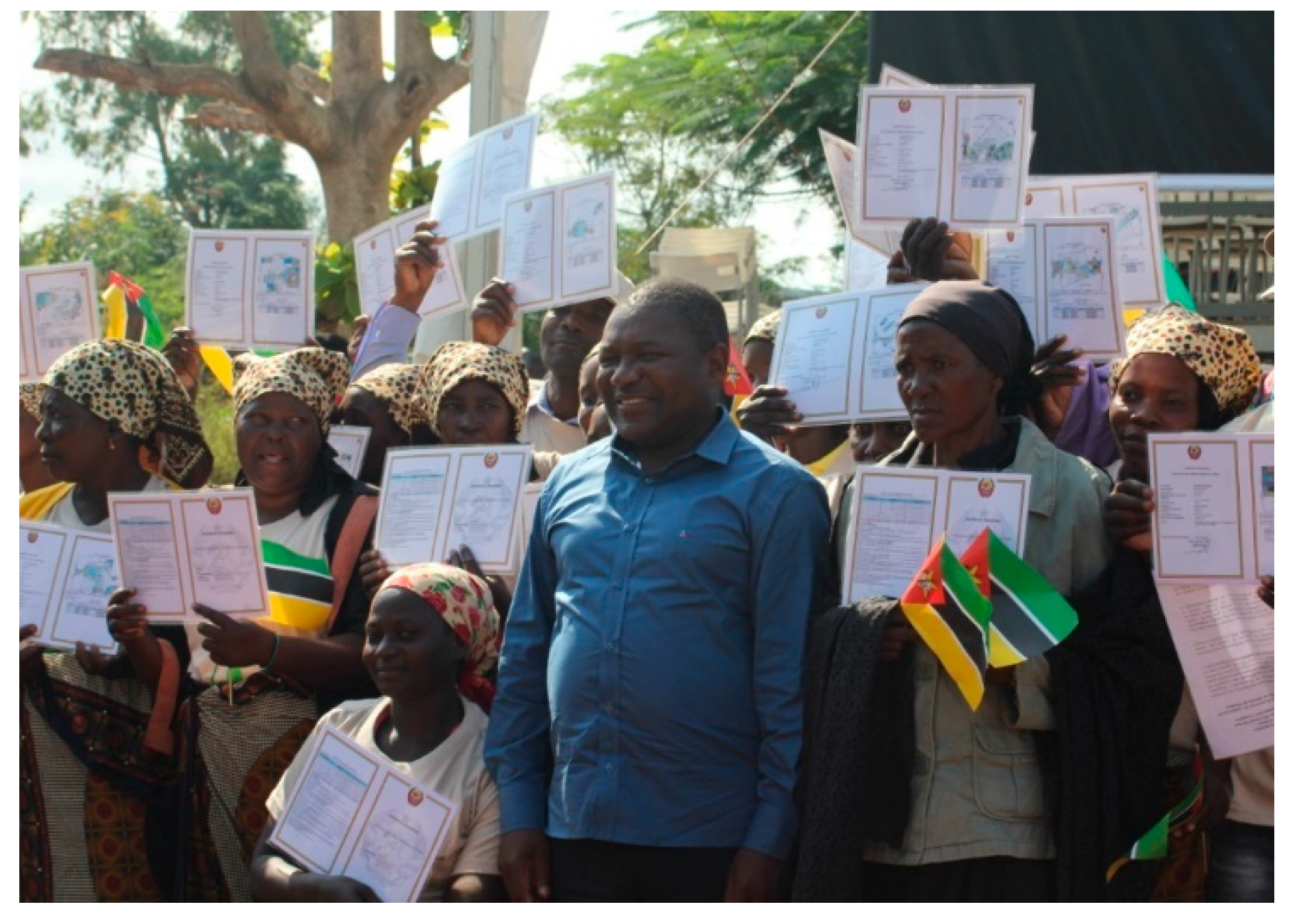
Publisher’s Note: MDPI stays neutral with regard to jurisdictional claims in published maps and institutional affiliations. |
© 2021 by the authors. Licensee MDPI, Basel, Switzerland. This article is an open access article distributed under the terms and conditions of the Creative Commons Attribution (CC BY) license (https://creativecommons.org/licenses/by/4.0/).
Share and Cite
Balas, M.; Carrilho, J.; Lemmen, C. The Fit for Purpose Land Administration Approach-Connecting People, Processes and Technology in Mozambique. Land 2021, 10, 818. https://doi.org/10.3390/land10080818
Balas M, Carrilho J, Lemmen C. The Fit for Purpose Land Administration Approach-Connecting People, Processes and Technology in Mozambique. Land. 2021; 10(8):818. https://doi.org/10.3390/land10080818
Chicago/Turabian StyleBalas, Marisa, João Carrilho, and Christiaan Lemmen. 2021. "The Fit for Purpose Land Administration Approach-Connecting People, Processes and Technology in Mozambique" Land 10, no. 8: 818. https://doi.org/10.3390/land10080818
APA StyleBalas, M., Carrilho, J., & Lemmen, C. (2021). The Fit for Purpose Land Administration Approach-Connecting People, Processes and Technology in Mozambique. Land, 10(8), 818. https://doi.org/10.3390/land10080818






